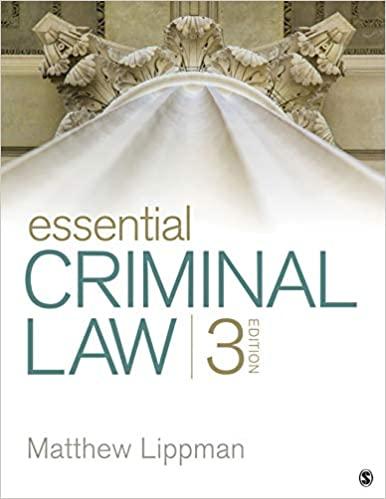Answered step by step
Verified Expert Solution
Question
1 Approved Answer
On Jan. 28, 1986, the space shuttle Challenger launched for its tenth and final mission. Seventy-three seconds into launch, the Challenger exploded with seven astronauts
On Jan. 28, 1986, the space shuttle Challenger launched for its tenth and final mission. Seventy-three seconds into launch, the Challenger exploded with seven astronauts aboard, including Christa McAuliffe who had been selected to be the first teacher in space. After a lengthy investigation, NASA concluded that the shuttle was destroyed when a primary and secondary O-ring on a solid rocket booster failed to seal and seat properly. The seal design was faulty, and the problem was made worse by unusually cold weather in Florida at the time of launch. Booster rocket flames passed through the failed seal, and burned through the external fuel tank. That detached one of the supports that held the booster to the side of the tank. The booster broke loose and collided with the tank, piercing its side. Liquid hydrogen and liquid oxygen fuels from the tank and booster mixed and ignited, tearing Challenger apart. Morton Thiokol, Inc. (MTI) designed and built the solid rocket boosters that contained the O-rings. MTI was aware of problems with O-ring performance, particularly in colder temperatures. The O-ring was rated safe for launch at temperatures of 40-90 degrees Fahrenheit. However, the O-ring was also known to have failed at 53o F. To counter the risk of failure, MTI had designed and installed a redundant secondary O-ring in the solid rocket booster. The purpose of the secondary O-ring was to do the job of the primary O-ring if the primary failed. When the Challenger exploded on Jan. 28, 1986, both O-rings failed to seal properly. Roger Boisjoly was the engineer who was more expert than anyone on the O-ring sealing and seating. Boisjoly had known since Feb. 1985 that both O-rings were subject to failure. Boisjoly had visually observed the double failure and reported the problem to his supervisor. Boisjoly was concerned that colder weather slowed down the response time of the O-rings, increasing the risk of a double O-ring failure on launch. In January 1986, Boisjoly's testing to determine the cause of the double failure was not complete. However, there had been no accidents resulting from O-ring failure. In the afternoon of Jan. 27, the day before the Challenger was scheduled to launch, it was reported that the temperature at the launch site was predicted to be below freezing. Discussions began regarding whether the launch should be canceled. There was a lot of pressure to go forward with the launch, including political pressure due to the teacher-in-space, budgetary pressure because of the cost overruns, the fact that this launch had been repeatedly postponed, and NASA making veiled threats to cancel MTI's very lucrative contract to build the solid rocket boosters. The launch team consisted of management and engineering representatives of NASA and MTI. Only management members had a vote as to whether to approve the launch. A three-way telephone conference call was held in the late evening of Jan. 27, with Boisjoly, McDonald and their supervisor, Robert Lund (also an engineer) recommending that the launch be canceled. During a private caucus of the MTI team, Lund was challenged to "take his engineering hat off and put his management hat on." Lund then changed his no-fly vote to fly, meaning that he approved the launch. No one told the NASA team that Lund changed his vote only after being pressured by his peers. Lawrence Mulloy was a key NASA manager located in Huntsville, Alabama and was a member of the management team voting to approve or disapprove the launch. After the fatal disaster, Mulloy said that he did not support the launch and was surprise when he voted yes in response to all of the other "yeses" that had been cast before him. Groupthink is defined as: a mode of thinking that people engage in when they are deeply involved in a cohesive in-group, when the members' strivings for unanimity override their motivation to realistically appraise alternative courses of action.... Groupthink refers to the deterioration of mental efficiency, reality testing, and moral judgment that results from in-group pressures. In another NASA accident, a launch pad fire took the lives of Apollo I astronauts Gus Grissom, Ed White, and Roger Chaffee on January 30, 1967. Gene Krantz, the Mission Control Flight Director, addressed his staff by saying, "We were too gungho about the schedule and we locked out all of the problems we saw each day in our work.... Not one of us stood up and said, "Damn it, STOP!" ESSAY QUESTIONS FOR YOU TO ANSWER Please discuss your thoughts and opinions as to whether Robert Lund and Lawrence Mulloy became victims of "group think" when they changed their vote to approve the launch instead of disapproving the launch. Why didn't anyone in management say "STOP"? The launch was approved by an unanimous vote of managers on the launch team. Would the managers' tolerance for risk have been less if one of the astronauts had been their wife or child
Step by Step Solution
There are 3 Steps involved in it
Step: 1

Get Instant Access to Expert-Tailored Solutions
See step-by-step solutions with expert insights and AI powered tools for academic success
Step: 2

Step: 3

Ace Your Homework with AI
Get the answers you need in no time with our AI-driven, step-by-step assistance
Get Started


